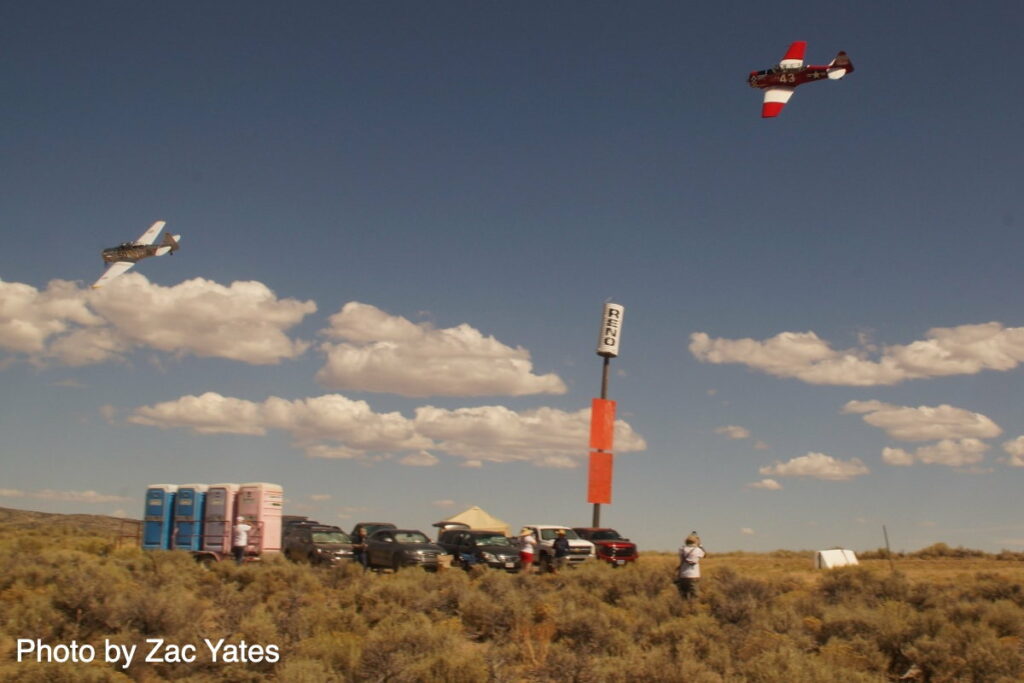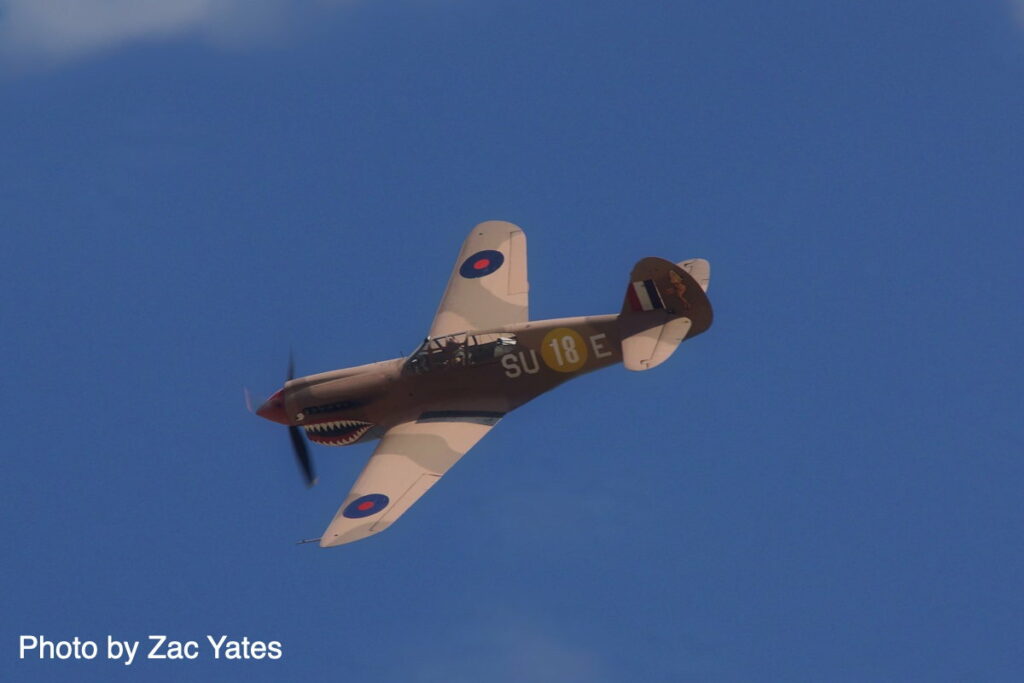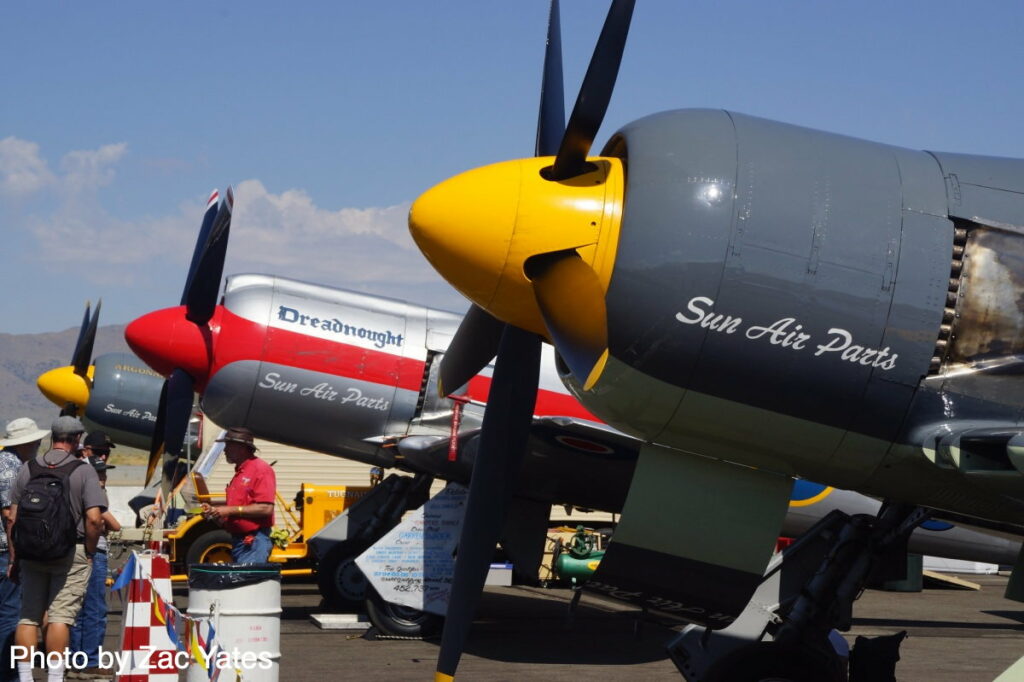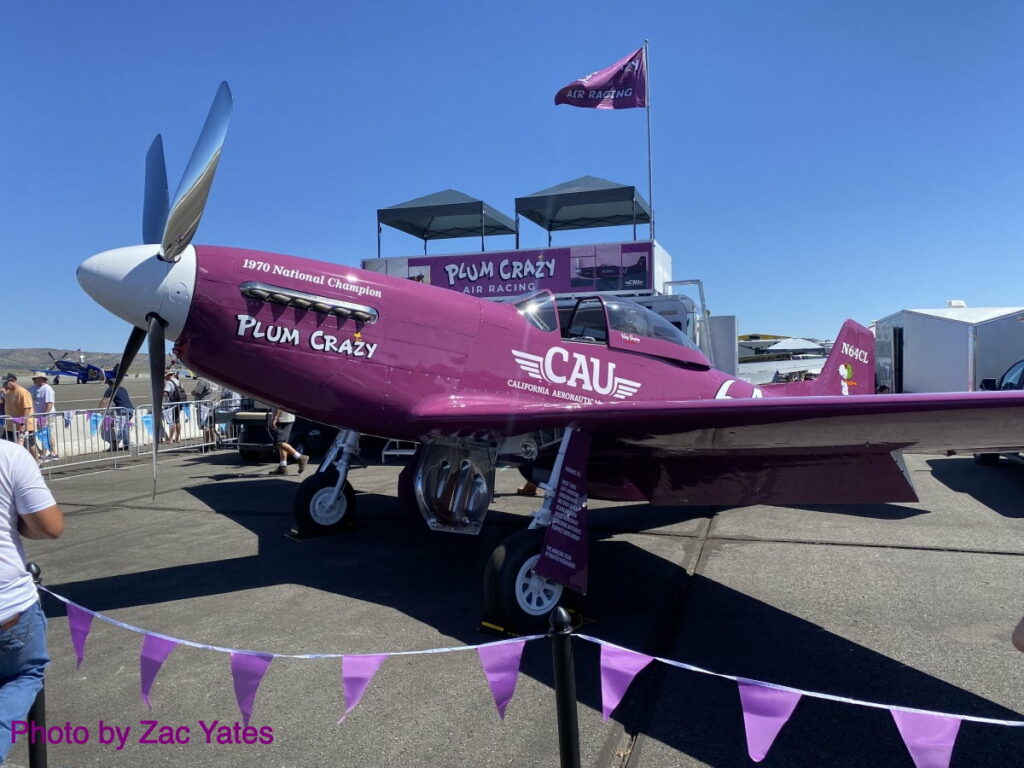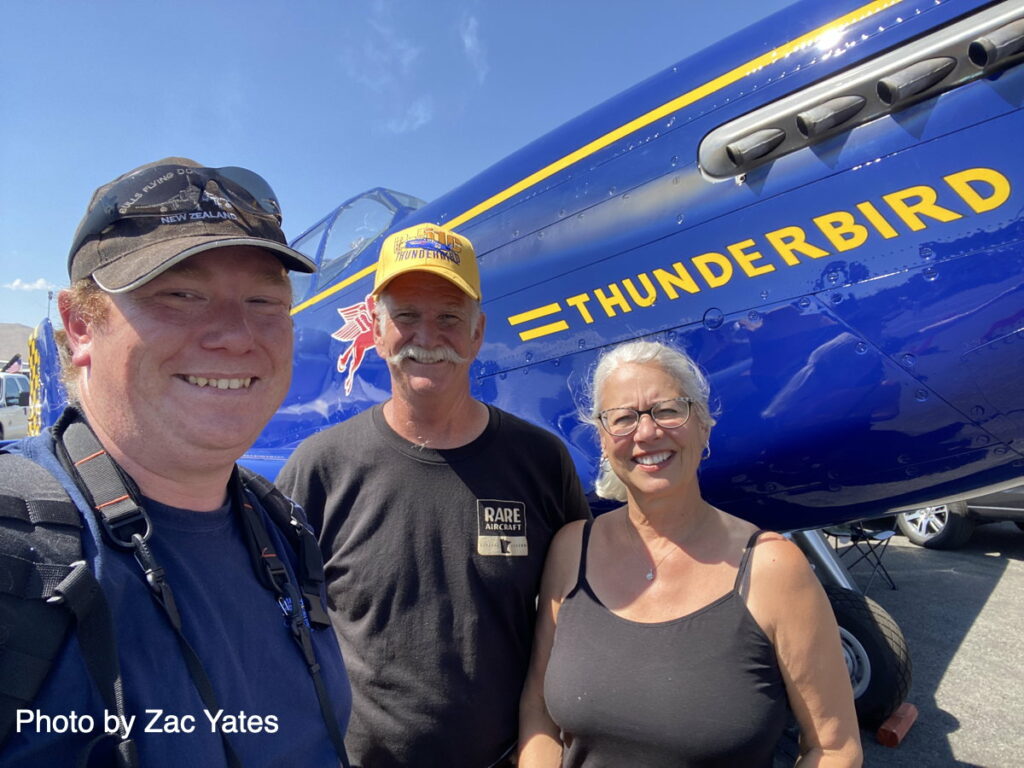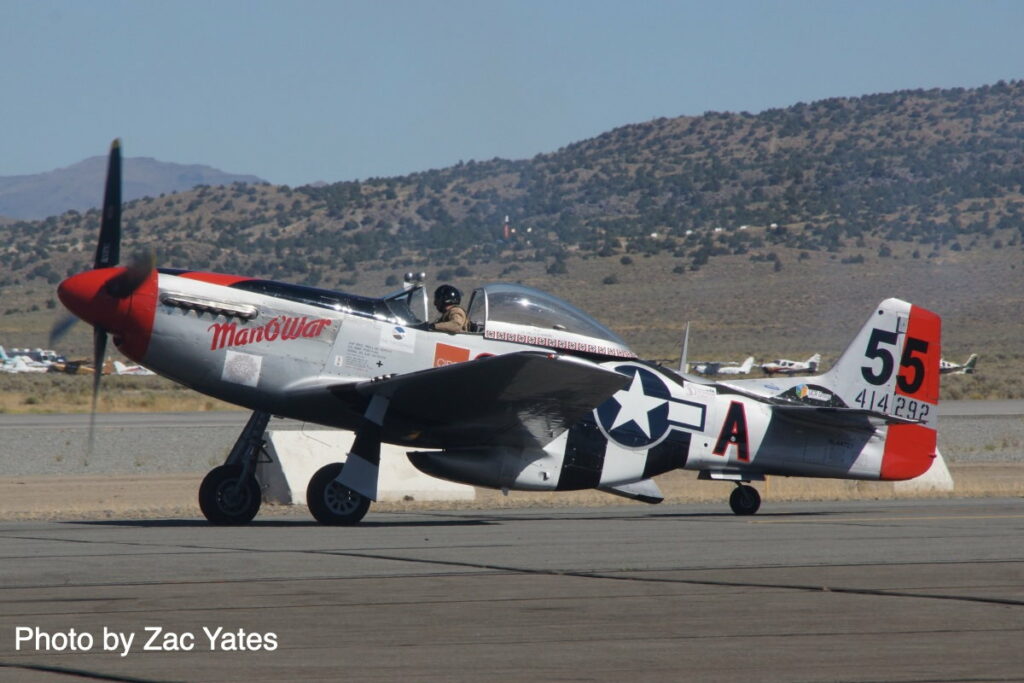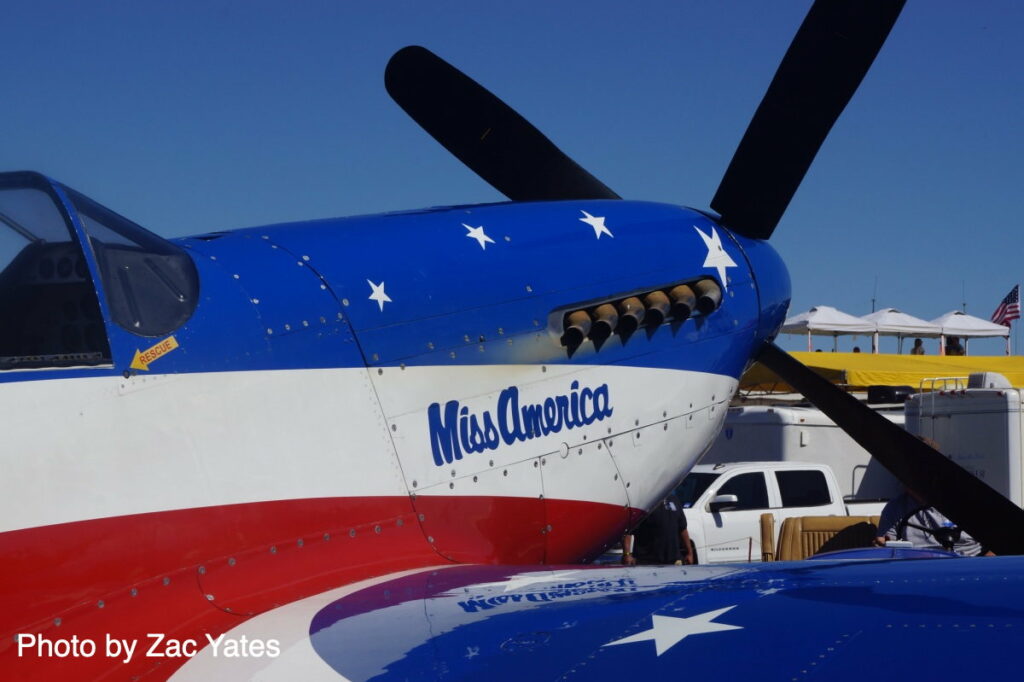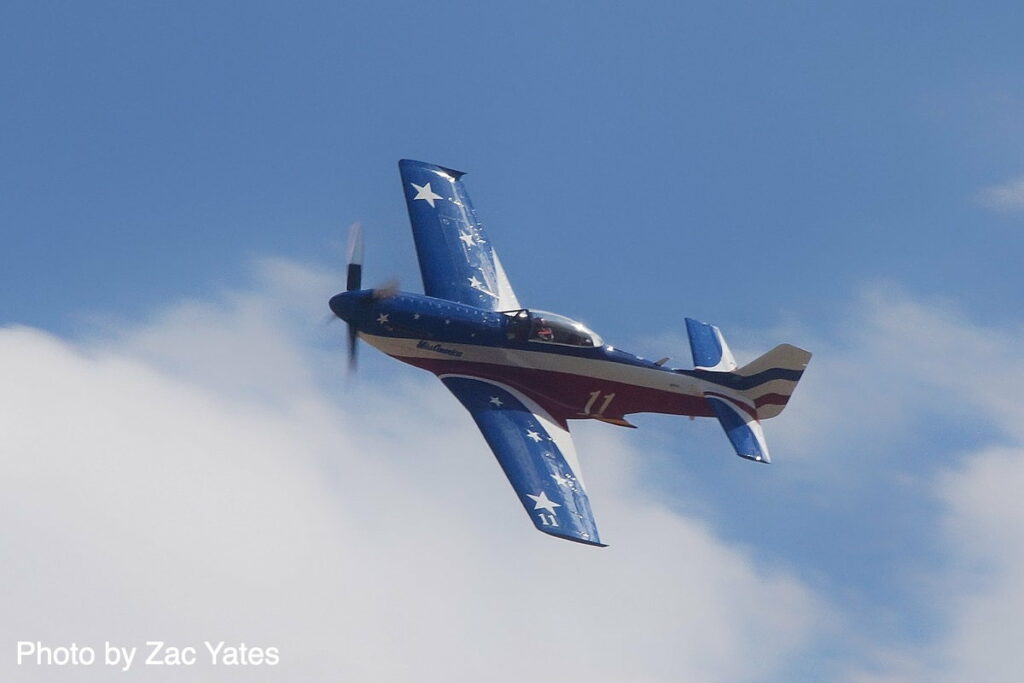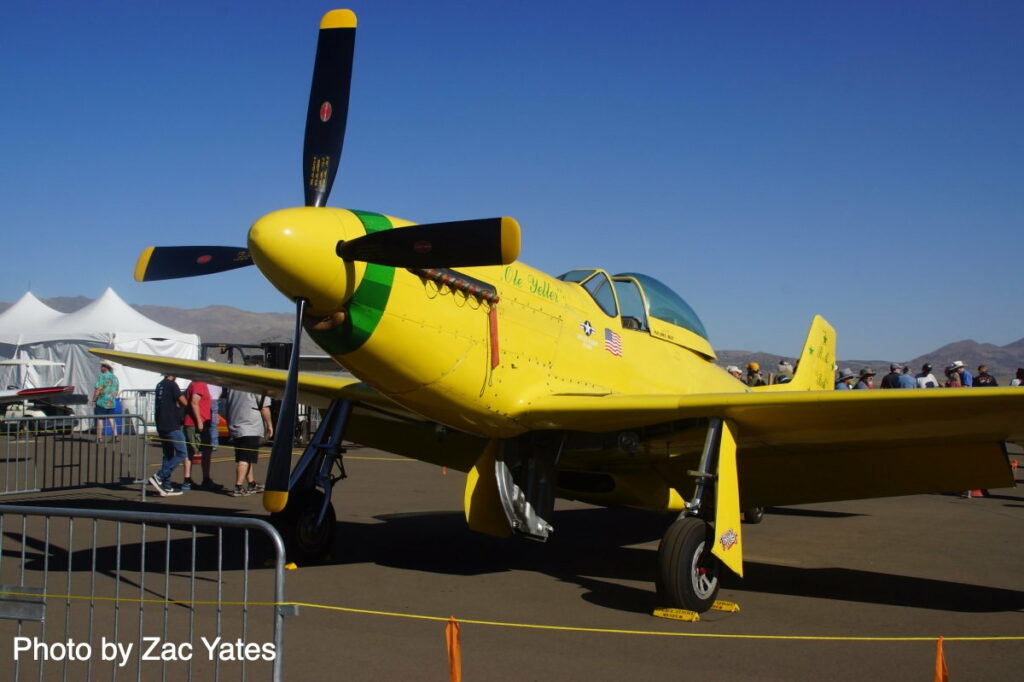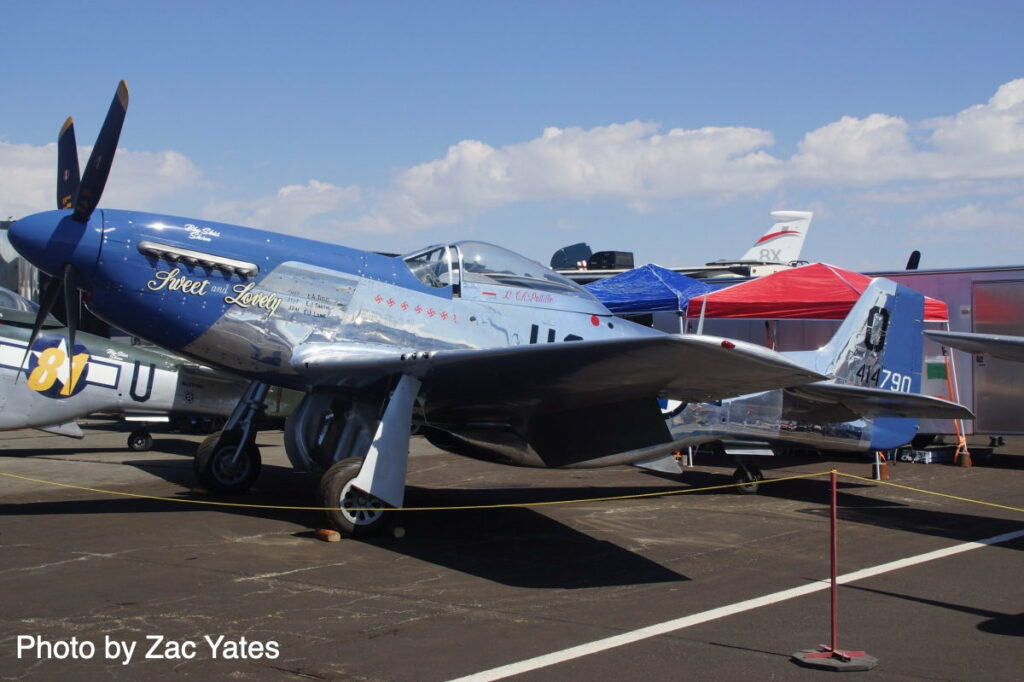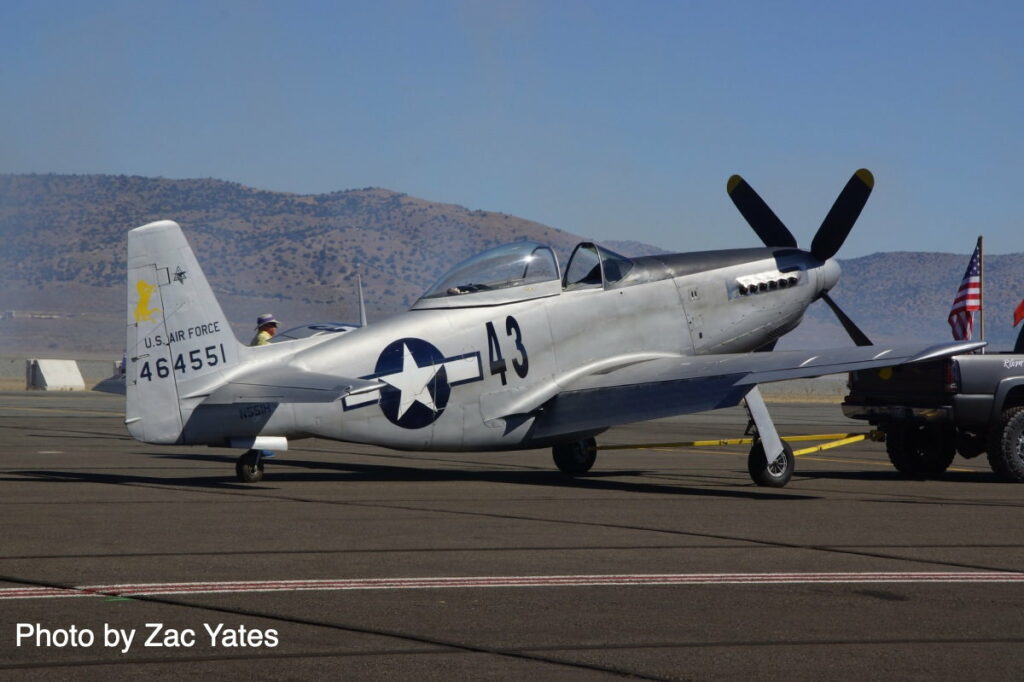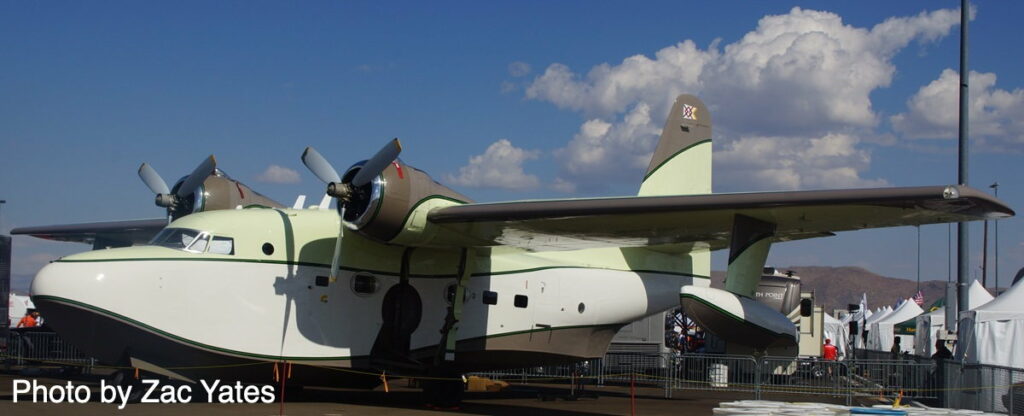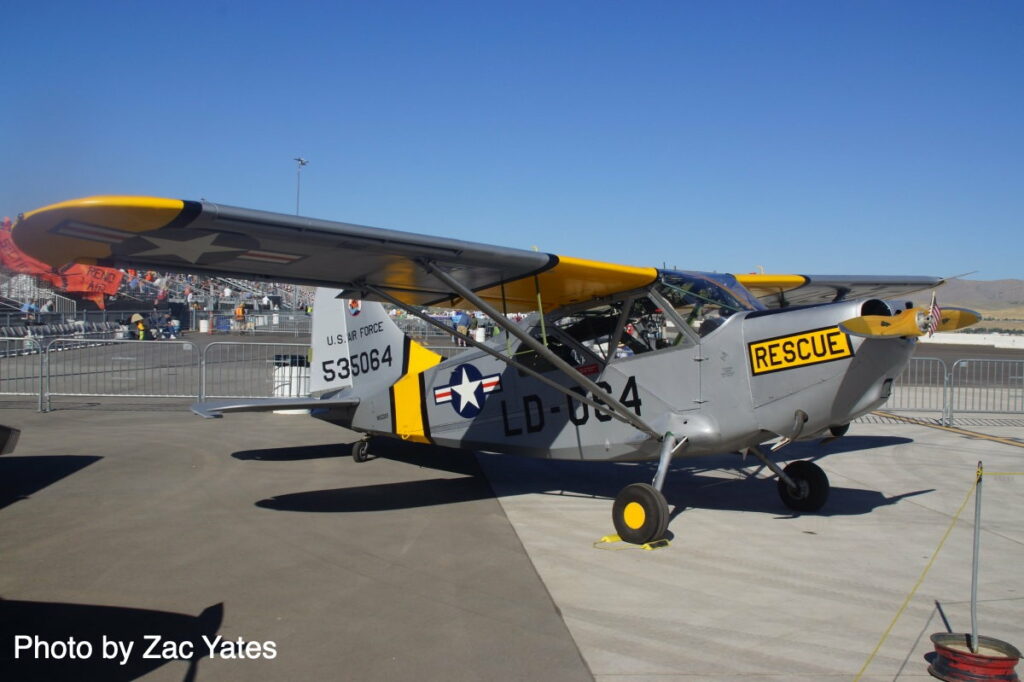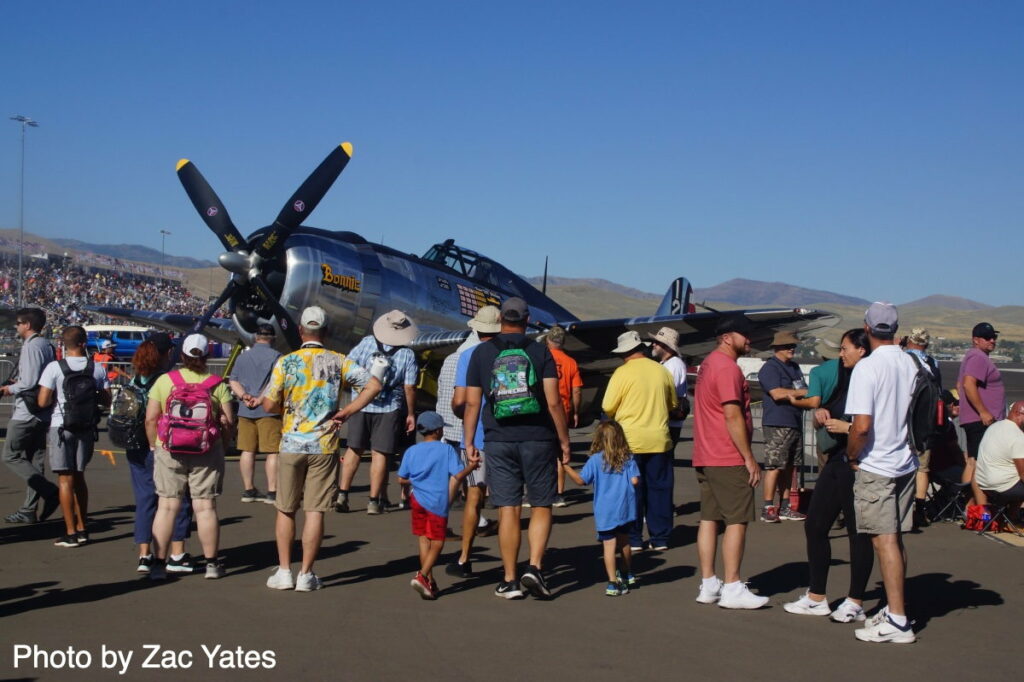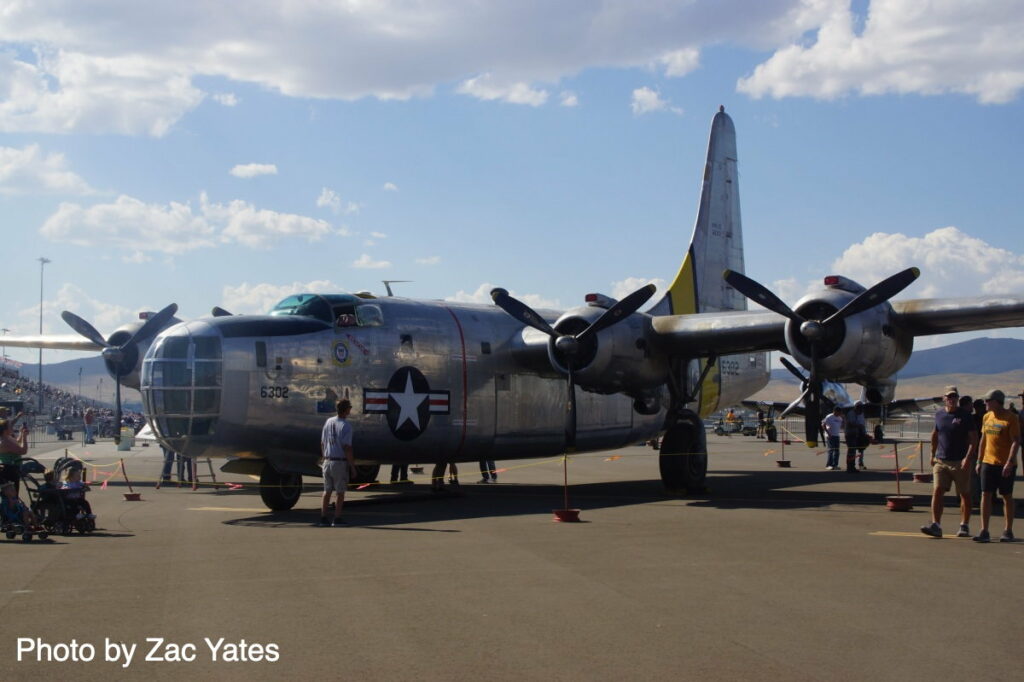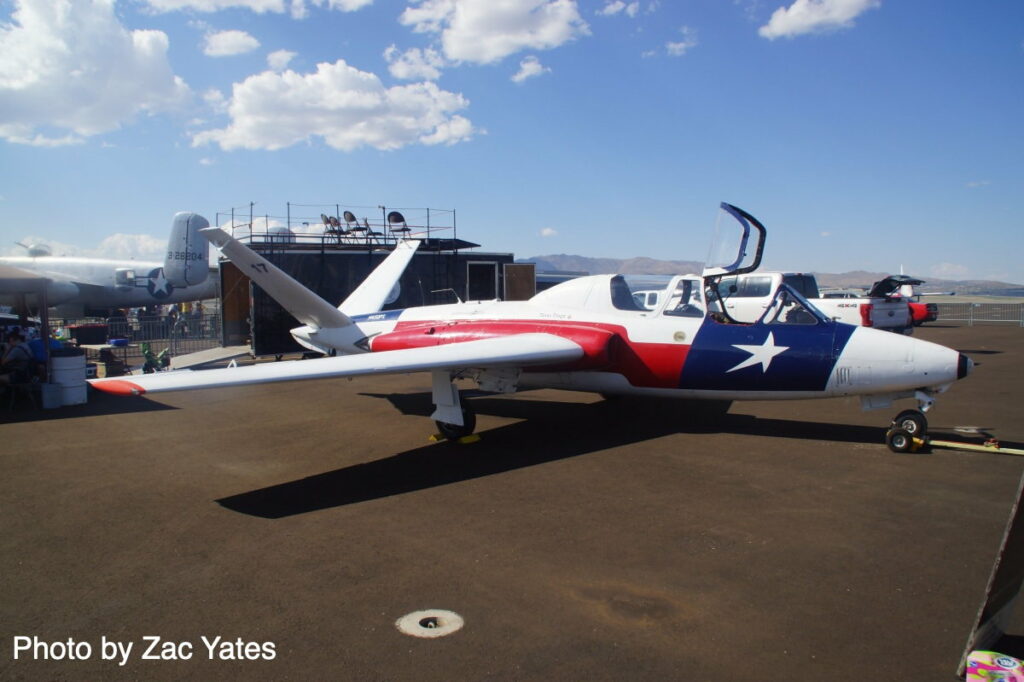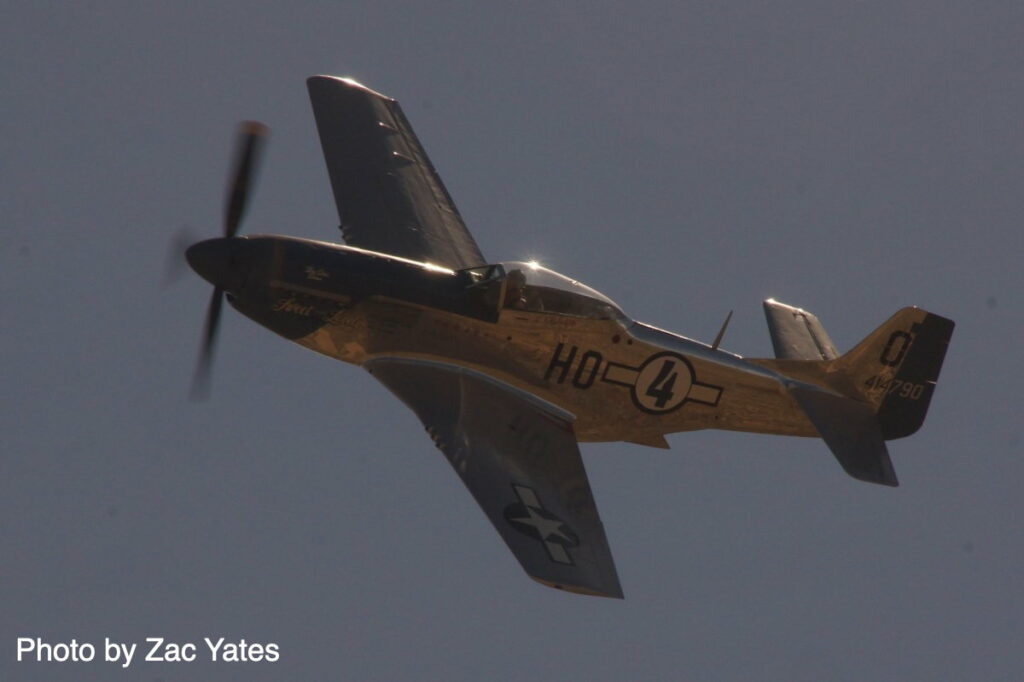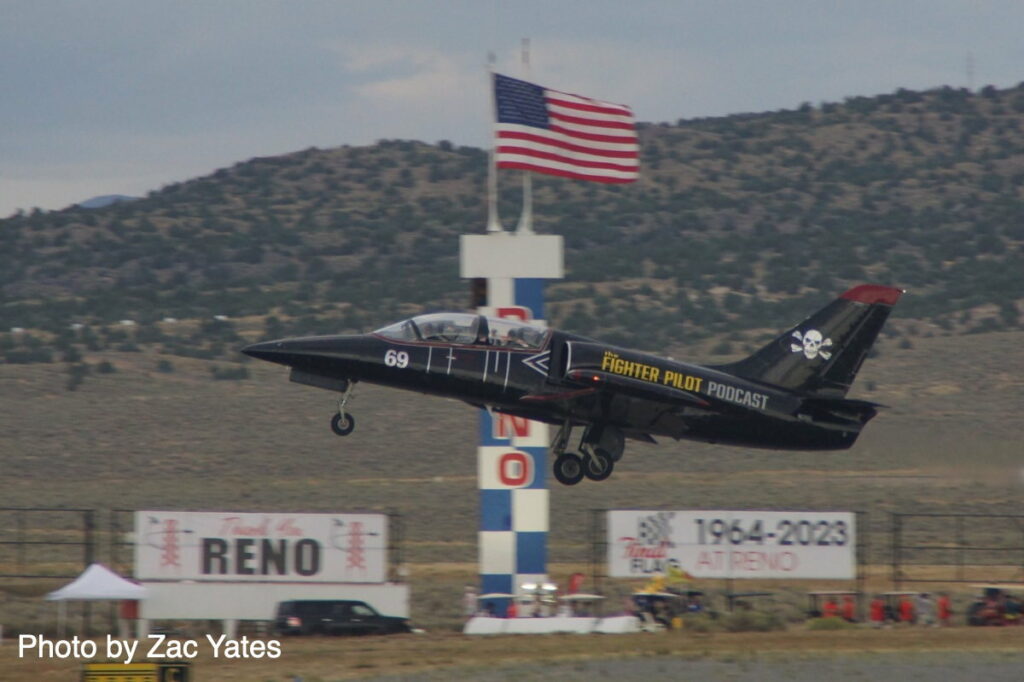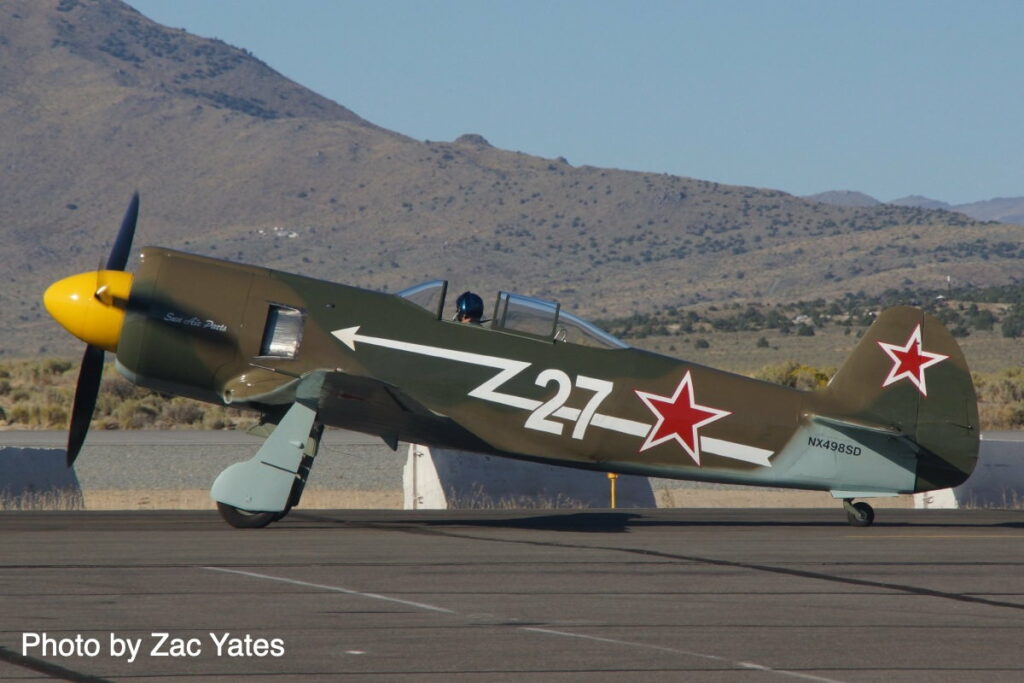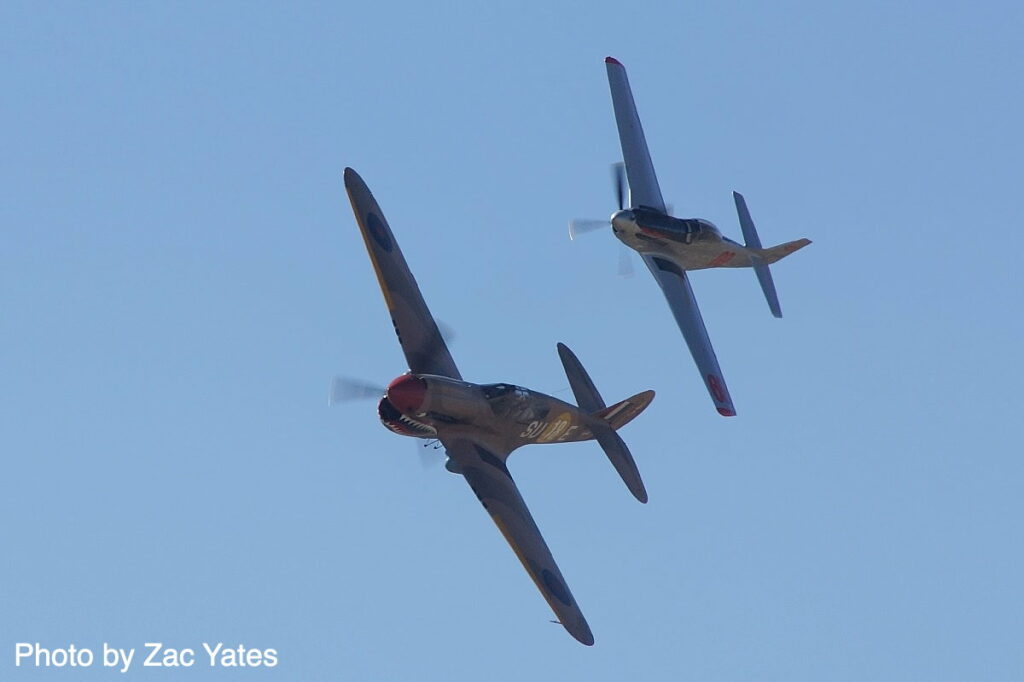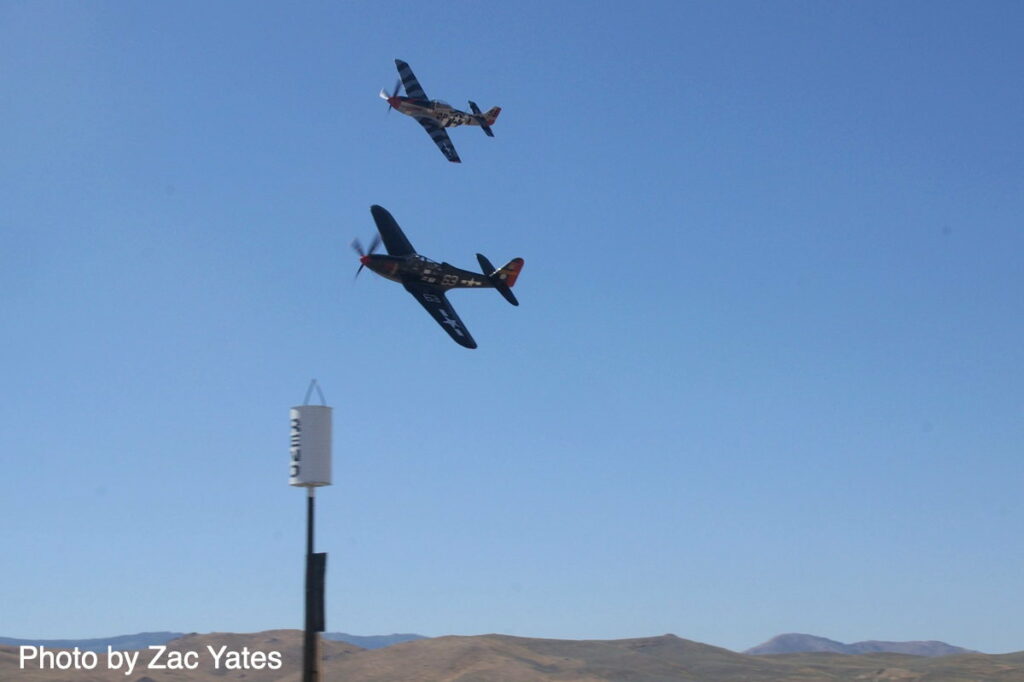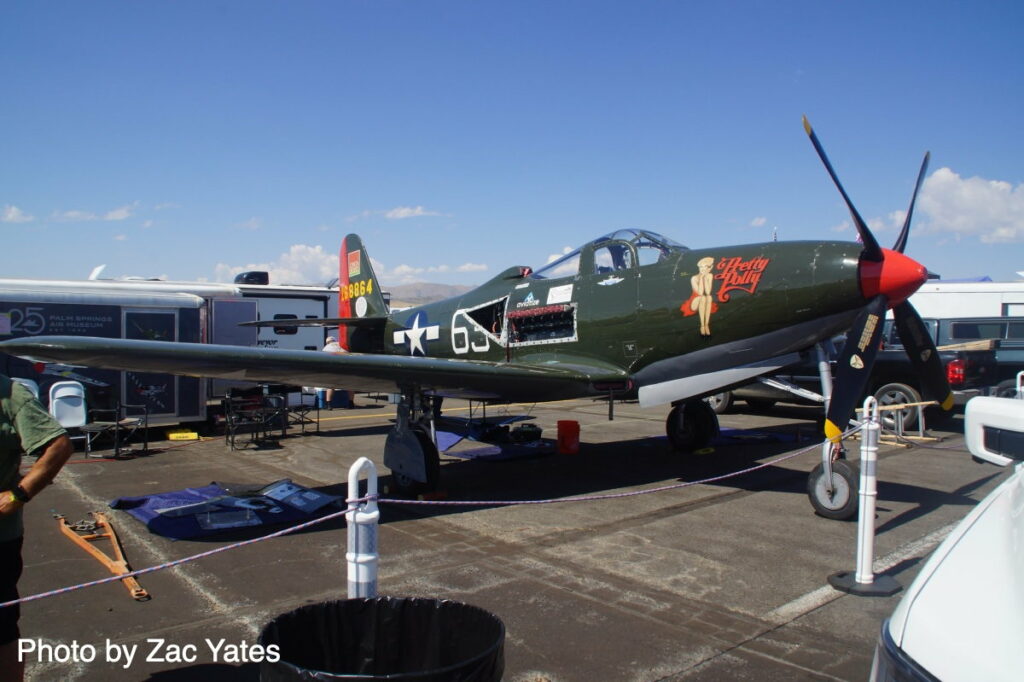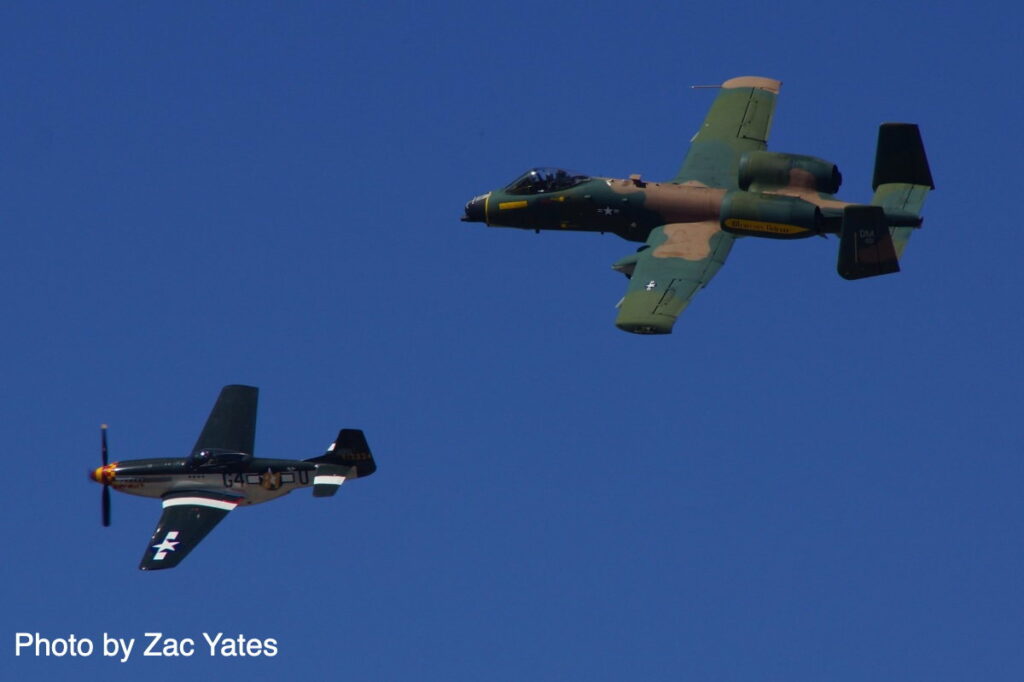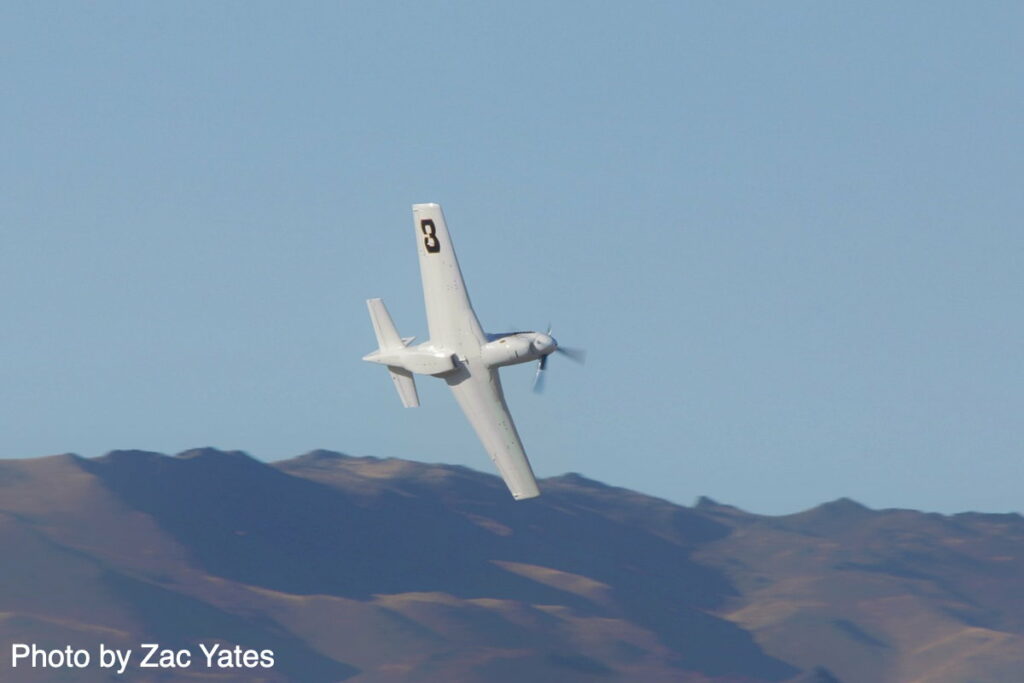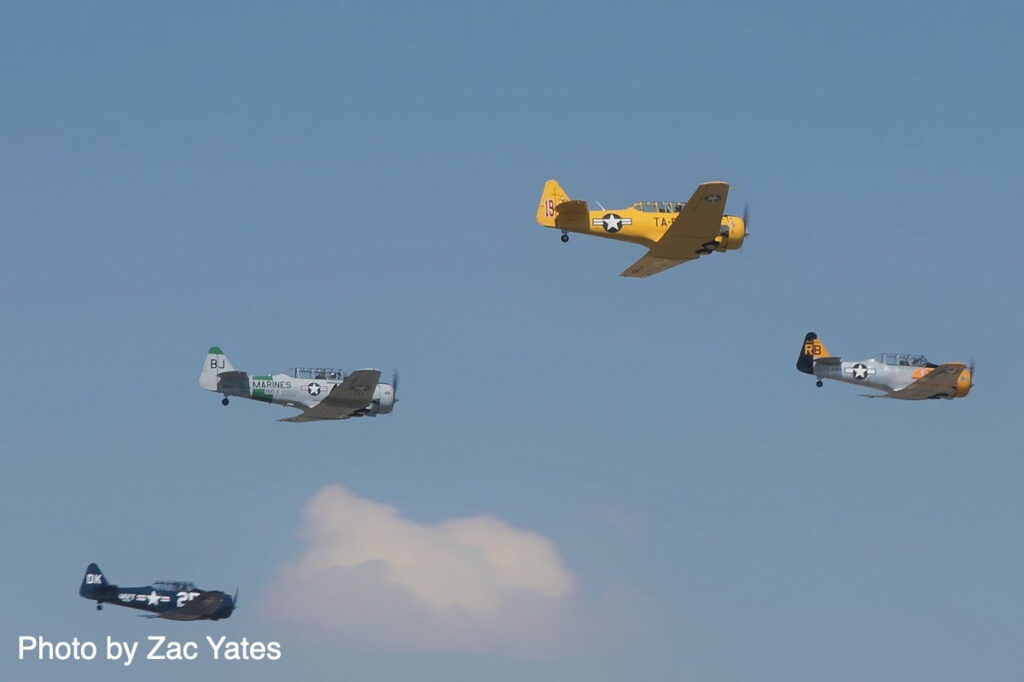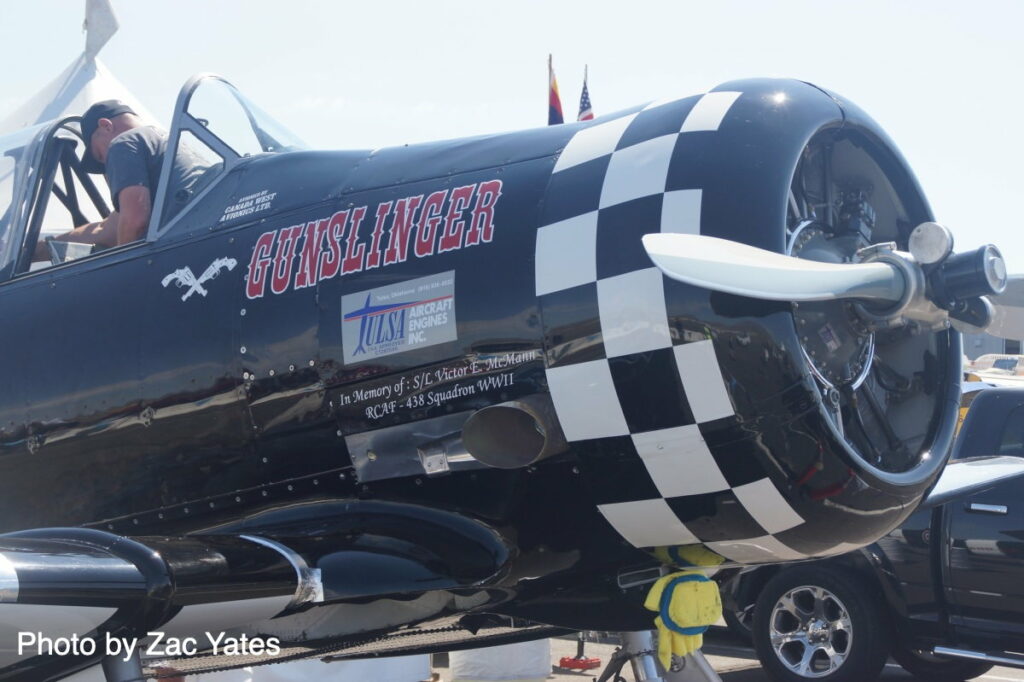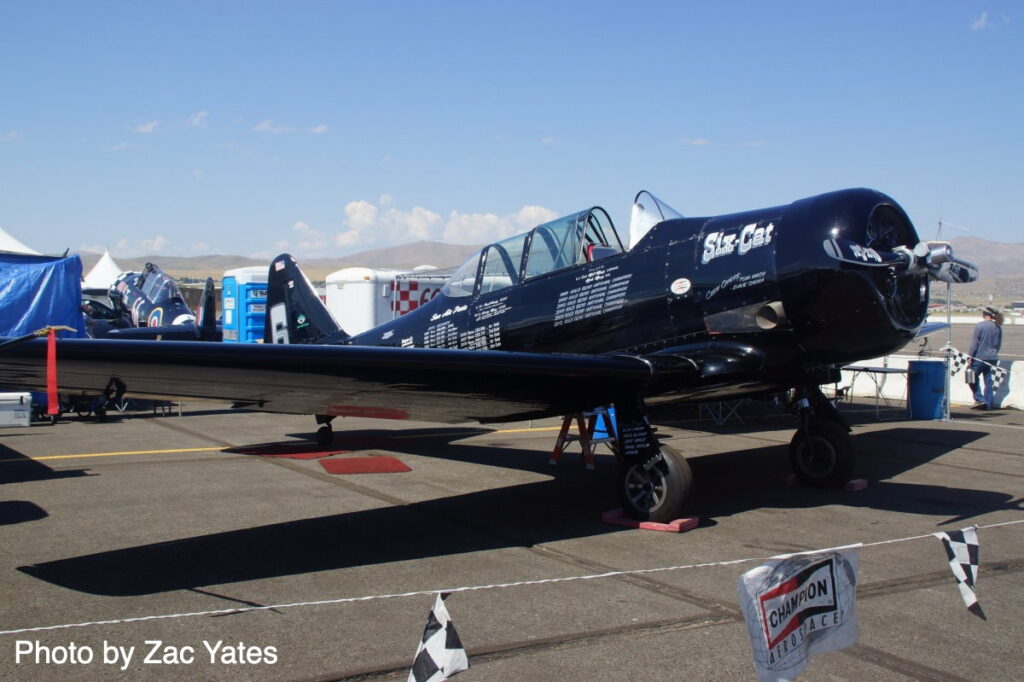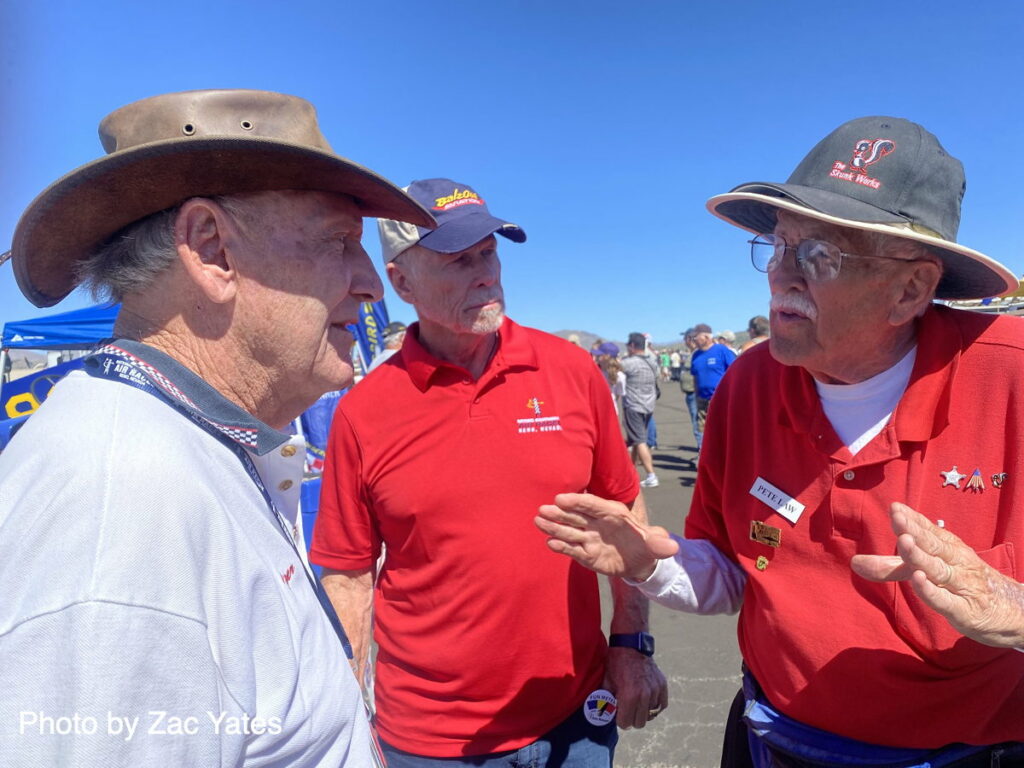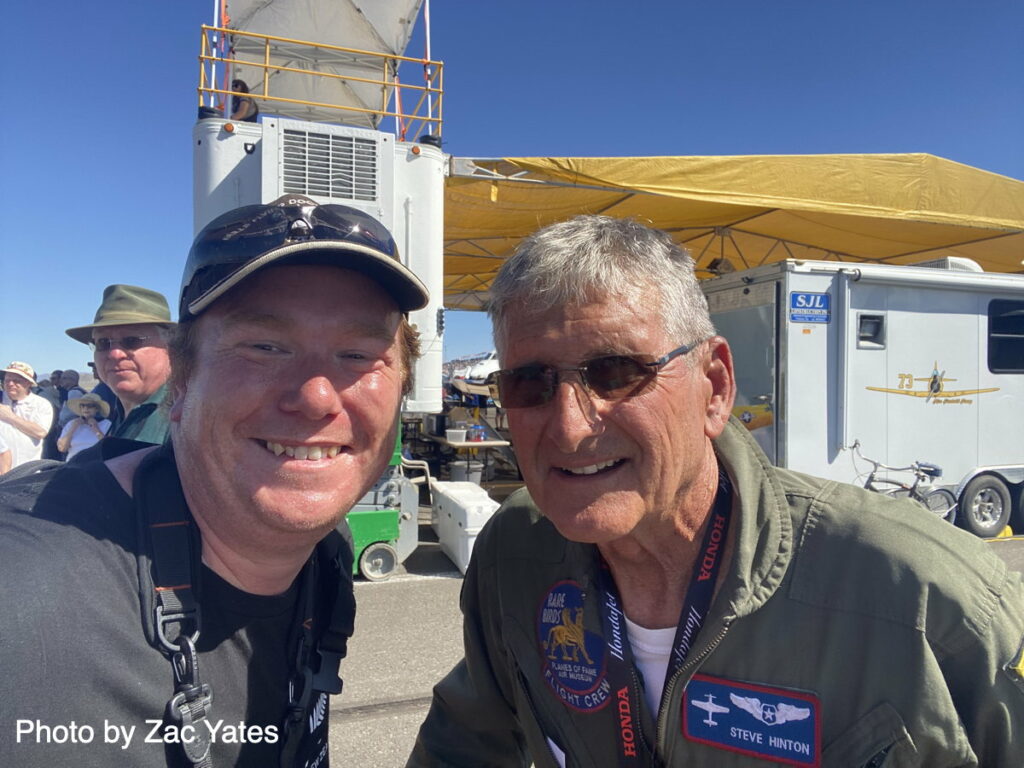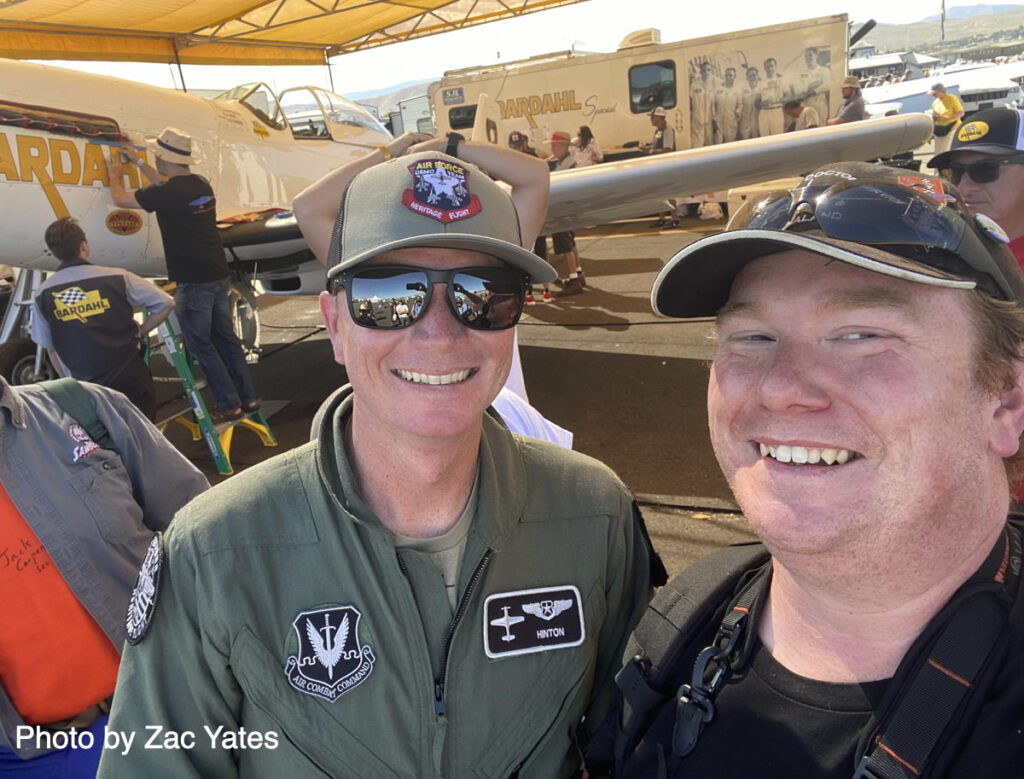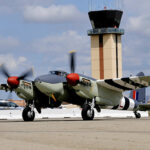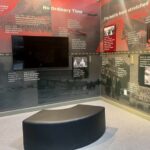A Personal Perspective on visiting the final Reno Air Races by Zac Yates
As an aviation-obsessed child there were a few VHS cassettes I’d watch on loop – airshows, films, documentaries – and one that always stuck with me was the BBC series Reaching for the Skies. One episode in particular, ‘The Quest for Speed’, featured sequences shot at the 1987 Reno Air Races. I was fascinated by the sight of Mustangs, Sea Furies and other fighters rounding a racecourse at what seemed like ludicrous speeds and in super-close proximity to one another just above the desert floor. I visited the local library and found a book on the event by Nigel Moll and the fascination became a hyper-focused obsession: one day I’d visit this mythical place in the desert and see these ‘Unlimiteds’ in action (not to mention all the other race Classes). As I got older I followed the races through magazine articles, new books and, thanks to the internet, watching videos of races past and then livestreams as they happened, as well as meeting fellow fans on discussion forums.
Now in my mid-thirties, I realized that next year would be the sixtieth anniversary and I started making tentative plans to attend for the first time. Then in March came the shock announcement from the Reno Air Racing Association (RARA) that 2023 would be the last National Championship Air Races and Air Show to be held at Reno-Stead airport – ‘The Final Flag’. At first I was shocked, and then decided I just had to get there at any cost – it was literally now or never.
Fortunately a friend agreed to assist with airfares and another offered accommodation and transport (we would spend one week at Reno and then the next week touring museums in the Northwest US). I learned from a photographer friend that access to the pylons was only possible for accredited media so I asked another friend who runs an aviation magazine here in New Zealand if he would be interested in vouching for me on my application, which was soon granted. All of this was done with telling the absolute bare minimum of friends and family just in case anything went wrong: I didn’t want to ‘talk up’ this big trip only to have it fall over at the last moment.
So on September 13, 2023, I shared a video on social media of the Unlimited Class pits that ended with me nodding at the camera in approval. There were a lot of surprised folks… not least including my parents!
I had arrived in the USA on Monday and spent the next day traveling with my friends, which meant we missed Dreadnought’s spectacular engine failure (and ensured I didn’t get to see ‘The Buick’ round the pylons) and arrived bright and early on Wednesday. The media briefing was at 0700 each day from Thursday so my friends had to draw straws as to who would sacrifice a sleep-in to get me onto the field in time!
When I stepped onto the airport for the first time it was everything I had imagined: to my left was the hangar full of Formula One and Sport racers (and Phantom, sole representative of the Biplane Class. They weren’t flying this year due to legal issues), and to the right stretched the pits. Sport Class homebuilts, the immortal T-6s (we call them Harvards here, but when in Rome!), and then the Unlimiteds. For as long as I can remember I’d wanted to see all these varied machines in this place and I was here! And they were here: the Sanders family’s trio of Sea Furies, the various Mustangs including a P-51H, a P-40E (my favourite type) and a P-63, a pair of radial Yaks that had been the subject of much online chatter and hype.
Then there were more famous Mustangs: Clay Lacy’s old Race #64, fresh off rebuild for new custodian Vicky Benzing, Sport and Jet Class veteran. #64 was once more resplendent in that infamous purple, but now named Plum Crazy. Next was the unashamedly patriotic veteran of more than fifty years’ racing Miss America (whose crew made me feel so welcome and left me with great memories…and some very humbling gifts); and the machine I had my hypothetical bets on to take home the final Reno Unlimited Gold trophy: Race #3 Bardahl Special. I’ll leave it to my fellow VAN correspondents to go into detail about what made this great white wonder so special but to say I was excited to see this ‘Superstang’ (or the closest thing to it since the days of Voodoo, Dago Red etcetera) round the sticks is quite an understatement.
Over the first couple of days I briefly toured the Jet and STOL Class parks, got my first in-person look at a bunch of USAF hardware in the military area, and checked out some gorgeous restorations participating in the National Aviation Heritage Invitational (NAHI) but most of my early time was spent in the Unlimited pits … and buying memorabilia before it all sold out!
Reno veterans talk about their ‘September family’ and even after a few days I knew exactly what they meant. We were all – tens of thousands of us – there for one reason: to indulge in a high-speed and utterly spectacular passion that can be witnessed nowhere else on Earth. I was able to meet up with friends I’d known only online for decades, to introduce myself to pilots I’d admired since childhood and ask for a ‘selfie’ (tracking down Steve and Steven Hinton that week became like hunting bigfoot but, unlike ‘squatch’ hunters, I eventually caught my quarry!), and to make new connections with my fellow photographers. Deep conversations with people I barely knew were punctuated with the snarl, rasp, roar or whistle of racers passing by the Home Pylon behind us.
Which conveniently brings me to my trips to the pylons themselves. Buses ran groups of accredited media out to Pylon Two (the East Bus) and Pylon Eight (the West Bus) each day, and you had to be quick to get a ticket. Will Campbell, a Reno photog of several years’ experience, was my ‘photography sensei’ who (as well as providing invaluable feedback on camera settings) advised me to practice, practice and practice some more so my photography was up to the task of shooting 400mph machines passing by less than 100ft away. But there was no way I could practice for this in New Zealand: the only way to practice for the pylons is to shoot at the pylons. Mark Kallio, a veteran who (among other racing activities) served on the 2003 Dago Red campaign and this year was Miss America’s embedded press, passed on some more sage advice I followed: ‘Shoot the first three or four laps, then put the camera down and just enjoy it.’ And that’s just what I did after getting off the West Bus.
Much as there was no real way for me to practice for shooting at the pylons, nothing could have prepared me for the actual experience of being ‘out on the sticks’ when I set myself up near Pylon Eight on Thursday. All the books, all the videos, all the stories from friends, nothing prepared me for when Jeff Lavelle and Andrew Findlay came tearing around Pylon Eight at what must have been maximum revs. My insides shook, the sound was unlike anything I’d heard, and all I could do was laugh in amazement and wonder: I was here! For thirty years I’d dreamed of what it must be like to watch Unlimited Class racers come past me at a pylon and finally it was happening: I’ll never forget that rumbling roar of the Yak Race #27 Miss Trinidad as pilot John Maloney blitzed by me with Vicky and Plum Crazy in hot pursuit. It was unreal.
Friday was another day in the pits and around the field, taking in the atmosphere. Saturday I was fortunate to get onto the East Bus out to Pylon Two, which was situated directly under the starting ‘chute’ that the Sport, Jet and Unlimited Class racers fly down to begin their respective races. We all spread out to find ‘the’ spot to shoot from and proceeded to settle in for the day. From our vantage point those with decent lenses could shoot the aerobatic and military displays: those of us with shortcomings in that department had to settle for when the performers repositioned or turned over us – I never expected to look up at the belly of an A-10 a few hundred feet above!
But when the races were on I was in my element: photographing the aircraft as they came down the chute directly overhead, and as they approached and rounded Pylon Two at ever increasing speeds. (I was lucky that another friend had arranged for a small camcorder to be delivered to the Media Ops centre for my use.) The T-6 races were so close; the Sports so unexpectedly quick; the Jets so expectedly quick; the Unlimiteds so utterly spectacular, especially Miss America and Bardahl Special (the NOISE of that thing! ‘Go Stevo!’, I was shouting in my head). Unlike watching a Grand Prix or Nascar race our view of the racecourse was almost totally unobscured, save for a couple of hills when certain pilots took the minimum height limit of 50 ft seriously!
On Sunday one of my new friends scored one of the hot tickets – a ride on the bus out to Pylon Four, way out the back of the course – and very kindly left his East Bus ticket for me to use. I had planned to spend the day in the grandstands – I hadn’t sat down very much in the preceding four days and wanted to meet the folk in Section 3, the orange-clad diehards who were the life of the party – but the chance to spend the last ever Reno Sunday at Pylon Two was too good to pass up. So again we boarded the bus (some of us for the second day in a row), found our spots and settled in for another great day of racing. The weather was better as the previous day’s cloud was gone; the flying displays were polished; and the races were entertaining. As Race #6 Six-Cat, one of the legendary T-6s I’d read about since childhood, passed me on the final lap of the Gold race I watched pilot Nick Macy round the pylon as he’d done countless times before and thought ‘I wonder when we’ll see this again?’
A few minutes after that philosophical moment, the race was over. I shot the aircraft pulling past the Home Pylon, turned off my camera to save its battery and reapplied sunscreen. Then I heard the pylon officials behind me saying ‘I heard something about a mayday, a red flag’. I immediately scanned the horizon all around me but saw nothing. One of my traveling companions sent me a message from the T-6 pits asking ‘Did you see that?’. Those with long lenses were looking to the west where we saw flashing lights of emergency vehicles in fields about a mile from where I was standing. Something had happened to one or more of the T-6s but none of us out on the pylon knew what happened as we’d seen nothing; we were relying on second- and third-hand information, text messages and radio chatter – we thought Six-Cat had made a belly-landing, someone else said there was a collision, even the pylon officials were frantically making calls to establish what happened. It wasn’t until a press release was emailed about 30 minutes afterward that it was confirmed: Chris Rushing’s and Nick Macy’s T-6s – having just come first and second in the race – had collided and crashed, killing both men. Fifteen minutes after I received the email we were rounded up and put on the bus back to the airport: the remaining races were cancelled and the event was over.
Sitting in shocked silence on the bus I thought: this wasn’t how it was meant to end. This was ‘the last Reno’, it was meant to be a triumphant celebration of 59 years of air racing in Nevada. For me it was meant to be the trip of a lifetime. And, without any intent to dishonor the memory of the dead, it was. Up until 2pm on Sunday I’d had an incredible time, made countless new friendships, and made memories that will last forever.
And it’s those memories that will endure: seeing my first Sea Furies whip around the pylons; getting to shake the hands of pilots like Vicky Benzing and Tom Nightingale and wish them luck; listening in while Tiger Destefani, Alan Preston and Pete Law swapped war stories (and then to take a photo of the trio with Alan’s camera…with a selfie as payment!); the sunset photo shoots with Thunderbird, Plum Crazy and Bob Hoover’s Ole Yeller; and finally tracking down Steve Hinton – a childhood hero –to snatch a few precious moments of conversation.
Six venues are vying to host the new version of the National Championship Air Races from 2025 [REPORT] and, early next year, RARA hopes to make an announcement about where that will be. Despite what happened on Sunday I sincerely hope that comes to pass, and that I can be there. I know many fans feel the same way: there are thousands of us who want to be somewhere we can watch aeroplanes fly low, go fast and turn left!









